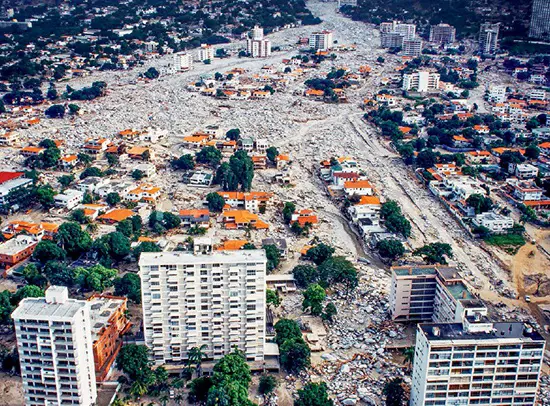The Vargas Landslide serves as a stark reminder that erosion, often perceived as a gradual process, can sometimes manifest suddenly with devastating consequences. This event, which occurred on December 15, 1999, in Venezuela, exemplifies the catastrophic nature of landslides. Triggered by days of heavy rainfall in the mountainous region of Vargas, north of Caracas, this disaster resulted in the tragic loss of 15,000 to 30,000 lives. The landslide not only claimed numerous lives but also led to the destruction or damage of nearly 100,000 homes, with some towns being completely obliterated or buried under up to 10 feet of mud, rocks, and debris.
Landslides, driven by gravity and influenced by topography, soil stability, and local weather conditions, can occur in various forms. These include shallow soil slips, deep-seated bedrock movements, debris flows, mudflows, earthflows, debris slides, and rock avalanches. Regions with tropical climates, high rainfall, and rugged topography are particularly prone to such disasters.
The Vargas Landslide is one of many historical landslides that have caused significant casualties and destruction worldwide, with similar events recorded in China, Colombia, Peru, and other countries. Often exacerbated by earthquakes or volcanic activity, these landslides highlight the need for better geological mapping and increased public awareness to mitigate risks and potentially save lives in the future.

